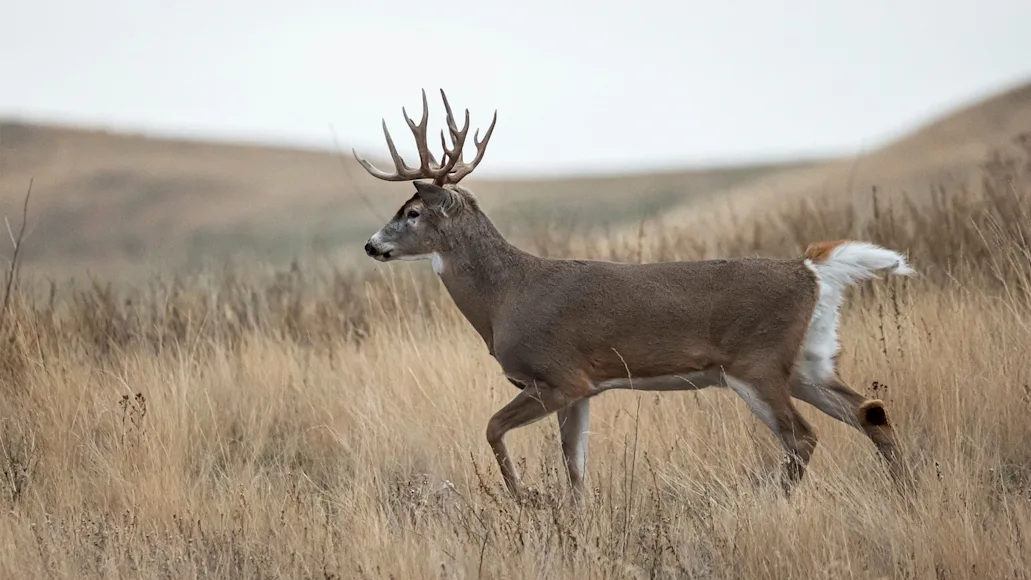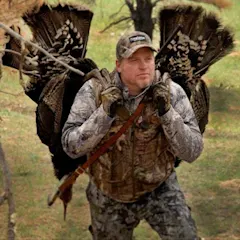If the wind is making your tree stand
sway so hard that you feel like you’re on a carnival ride, that’s too much wind for deer hunting—from a stand, at least. If branches large enough to maim are crashing down around your ground blind
, that’s also too much wind for deer hunting. If you see a barn roof where there’s no barn…okay, you get the idea. If you should be sheltering in place, then, yeah, you shouldn’t be out in the woods. Otherwise, there’s no such thing as too much wind for deer hunting. It is true that high winds can stifle deer movement at times, but it’s highly variable, and there are even situations when a howling gale can help. Here’s what you need to know.
How Much Wind is Too Much Where You’re Hunting?
As a general rule, high winds make deer nervous, and it’s easy to understand why. When a strong breeze rattles the corn stalks and howls through the valleys and groans in the treetops, deer can’t hear danger approaching as well as they normally can. By the same token, when branches sway and grasses wave and leaves spiral up into mini cyclones, deer are less able to catch the subtle movements of predators slinking. Gusty, shifting winds can even make it hard for deer to smell trouble. In other words, when the wind blows too hard, a deer’s defenses are compromised, which can make them less likely to move during daylight and more skittish if they do.
But—and this is very important—how hard is too hard depends very much on where you live and what the deer there are accustomed to. Where I live in the Northeast, a 20-mph wind is a real gale; throw in some stronger gusts, and it’s more than enough to put a damper on deer movement, or at least put the animals on high alert. But out on the plains and prairies, where the wind is aways blowing, 20-mph may barely count as a breeze. If deer there didn’t move in these winds, they’d starve in their beds. So, unlike the deer in my area, these critters have adapted to a strong, steady breeze and only get worked up if it really howls.
Of course, you get accustomed to your surroundings too. So, when you’re hunting around home, deciding how much wind is too much is fairly easy. If you step outside and say, “Man, it’s really blowing today,” then there’s a good chance that deer movement will be suppressed, whether the actual wind speed is 18 mph or 38mph. If you’re travelling to hunt, however, you’ll want to look up the average wind speed in the area you’re hunting. Two great resources for this are the U.S. Average Annual Wind Speed Map
from the Department of Energy and the Global Wind Atlas
, which allows you to click anywhere on a map of the world and get wind data. (Both express wind speed in meters per second, so you’ll want to keep in mind that 1 mps equals about 2.2 mph.)
When “Too Much” Wind Can Actually Help
As a general rule, whenever the wind cranks up to double or more the annual average for a given area, you can expect deer to alter their behavior—and usually not in a good way for hunters. But whether that’s too much wind for deer hunting is another question. If it’s safe to go, and you want to get out there, go. I’ve killed deer from East to West in absolute howlers. You just need to go into it knowing that you’ll probably see fewer deer, or that they might be extra skittish.
That said, there are a few times when you might actually see more deer when the wind is whipping. The first is during the heart of the rut. As F&S whitetails editor, Scott Bestul, has reported
in the past, some whitetail experts love nothing more than a blustery day during peak breeding. The idea is that does, tired of being harassed by bucks, use the extra sound and movement in the woods as cover to escape their suiters. Meanwhile, gusty winds blow estrous scent over hill and dale, and bucks become frantic to find its sources. So, next time you get high winds during the rut, try heading to an area that’s a little protected from the wind, like a wooded valley, or the lee side of a hill, or dense breeze-blocking cover. Then setup in a good travel corridor or pinch point and wait for a buck to cruise past.
The other time when high winds can increase deer activity is when it is bitterly cold outside. As any hardcore late-season deer hunter knows, the colder it is, the better deer move—and a biting wind makes low temps feel that much lower. In these conditions, deer have little choice but to fuel up to stay warm, which ups your odds of seeing them pile into an afternoon food source. They may be on edge, but they’ll most likely show up.
One of the best weeks of bowhunting I can remember was a 5-day stretch in Minnesota with Bestul, when temps hovered around zero and a brutal and unrelenting wind numbed our faces within seconds of climbing into our stands. But boy did the deer move. I missed my chance at a beef-bodied 10-pointer because my hands were too cold to attach my release to the bowstring in time. I went home empty handed, but it sure wasn’t for lack of deer on their feet.
Too Much Wind for Deer Hunting? Almost Never
As a rule, howling winds and blustering gales bring bad news for deer hunters. Outside of the situations above, if you do step outside and say, “Man, it’s really blowing today,” well, sure, you might want to pick a better day to go hunting, because odds are high that the deer movement will be slower than normal. But is it really too much wind for deer hunting? Nah. If it’s your one day off, or you just really want to go, don’t let a stiff breeze stop you. (As long as it’s safe.) And don’t forget that the same wind that makes deer less likely to be on their feet also makes them less likely to see or hear you coming. And as long as you play it right, a stiff and steady wind will make them less likely to smell you too. If you like the idea of hunting on your feet, the wind will give you a few advantages you don’t usually have without it—and wouldn’t it be cool to slip up on a buck and fill your tag while everyone else decided to stay home?


